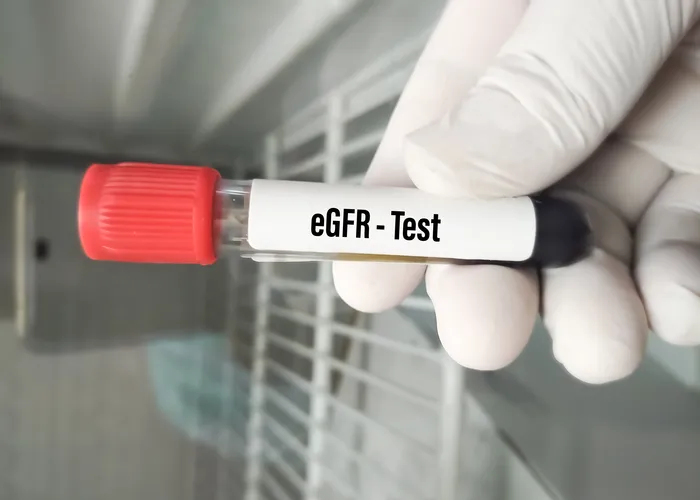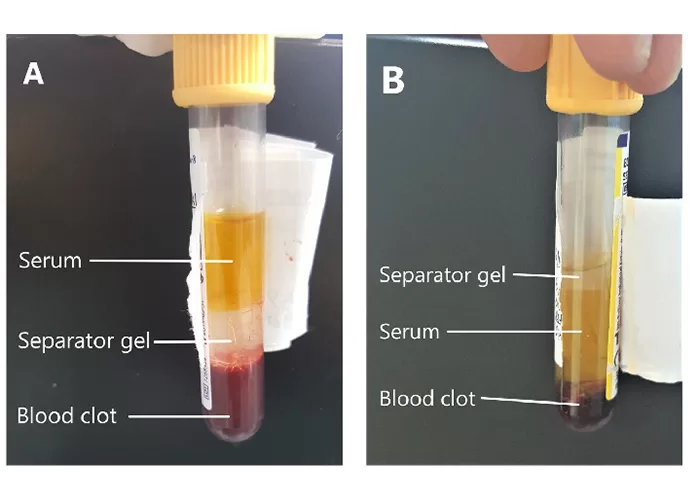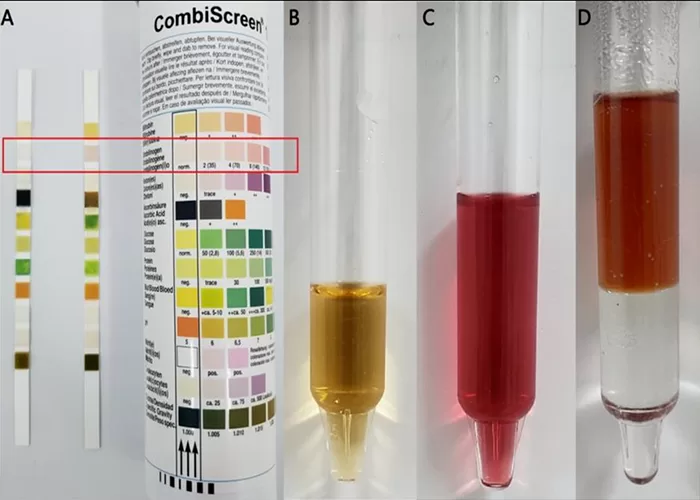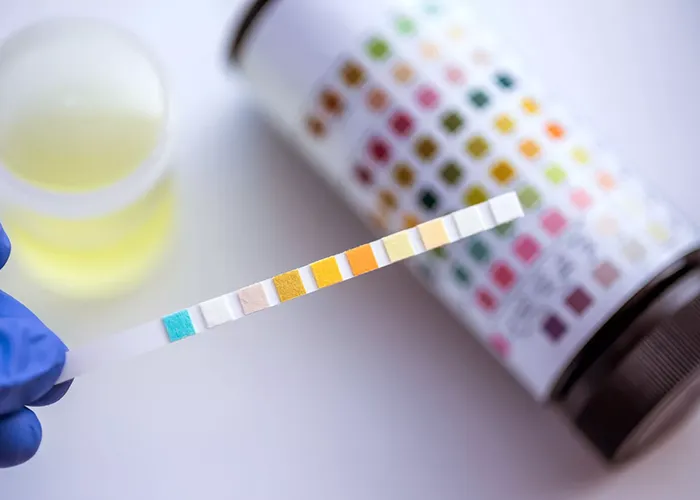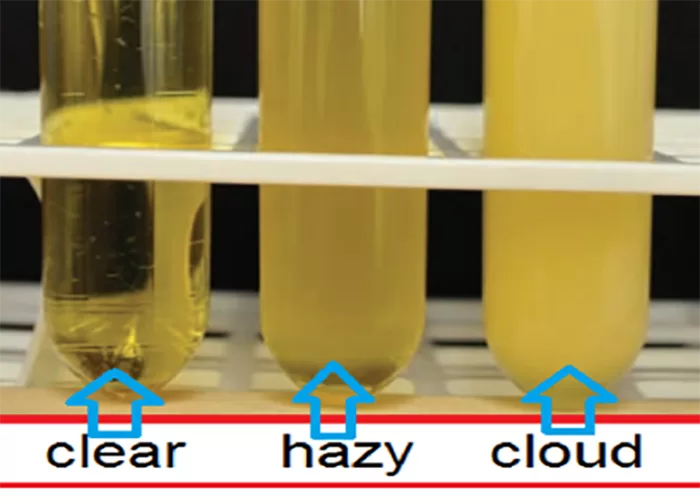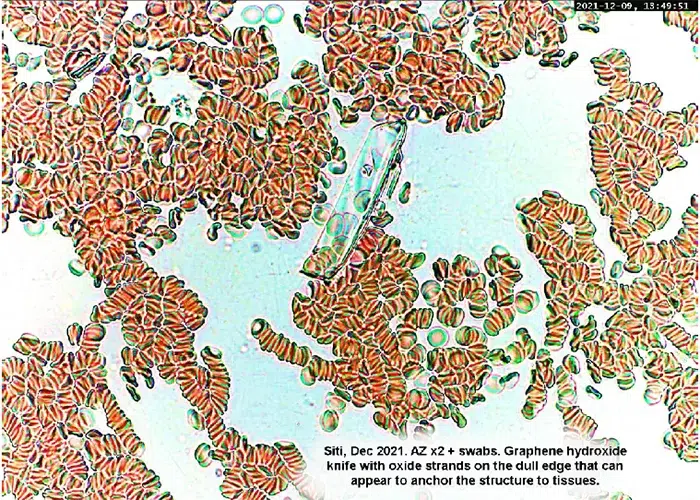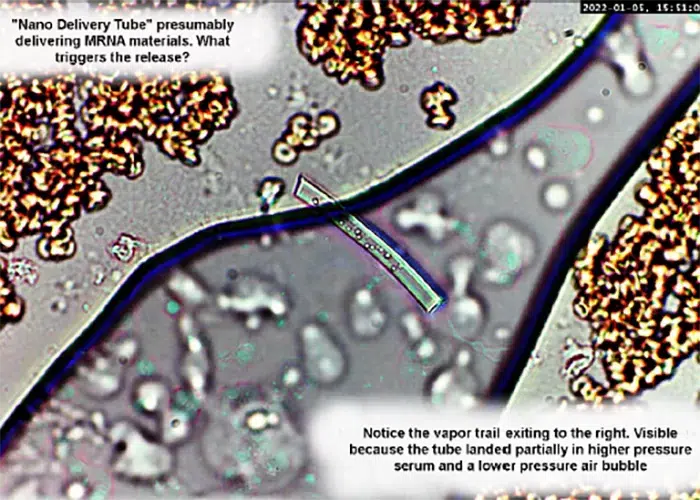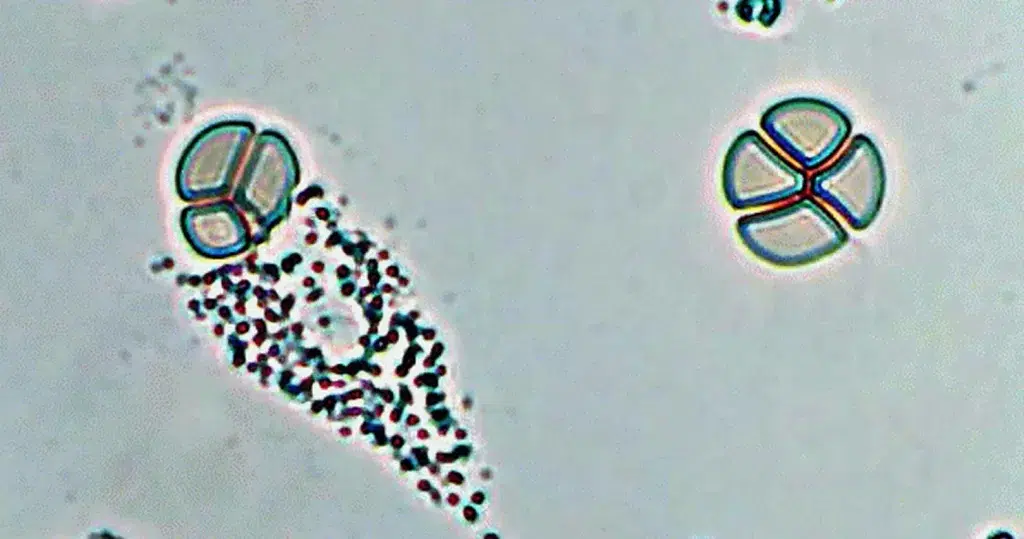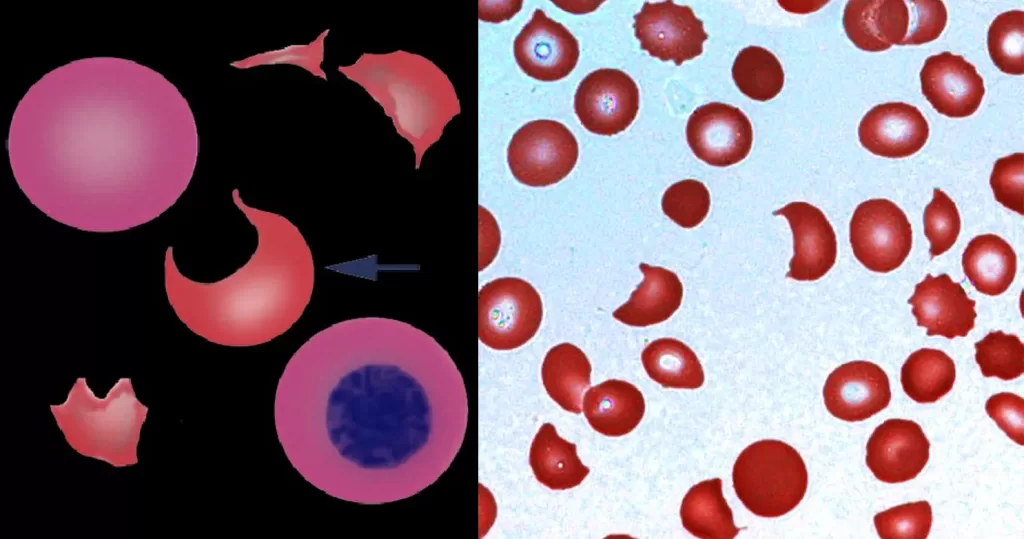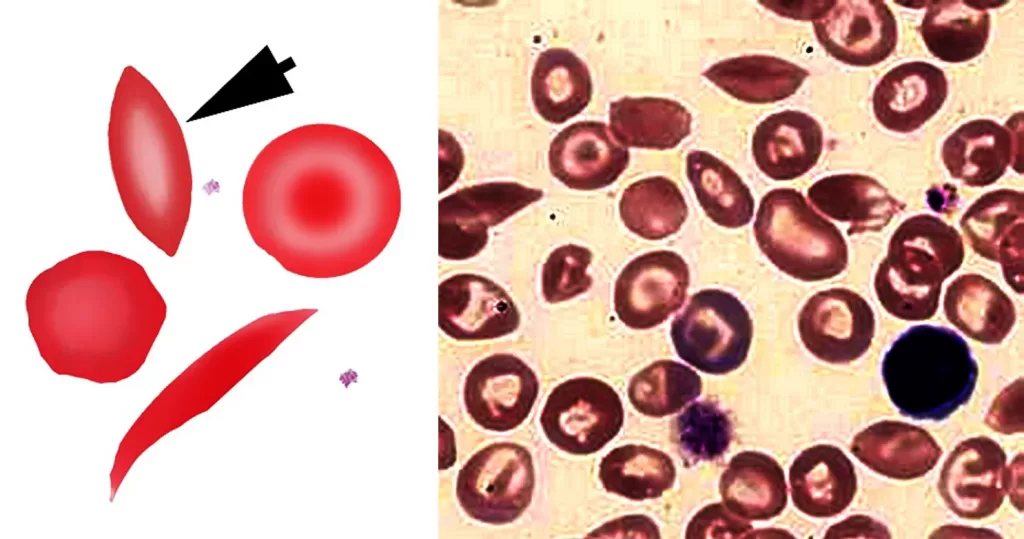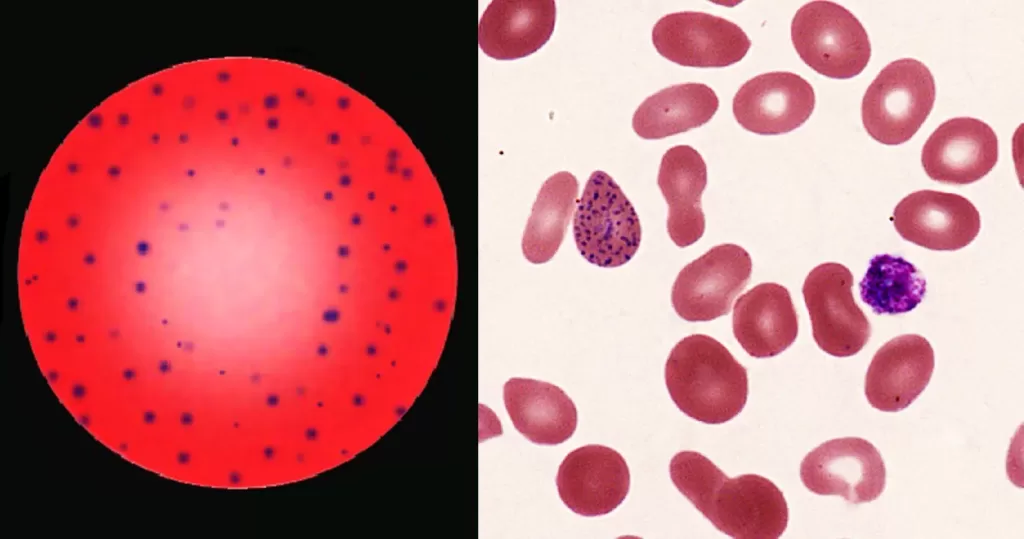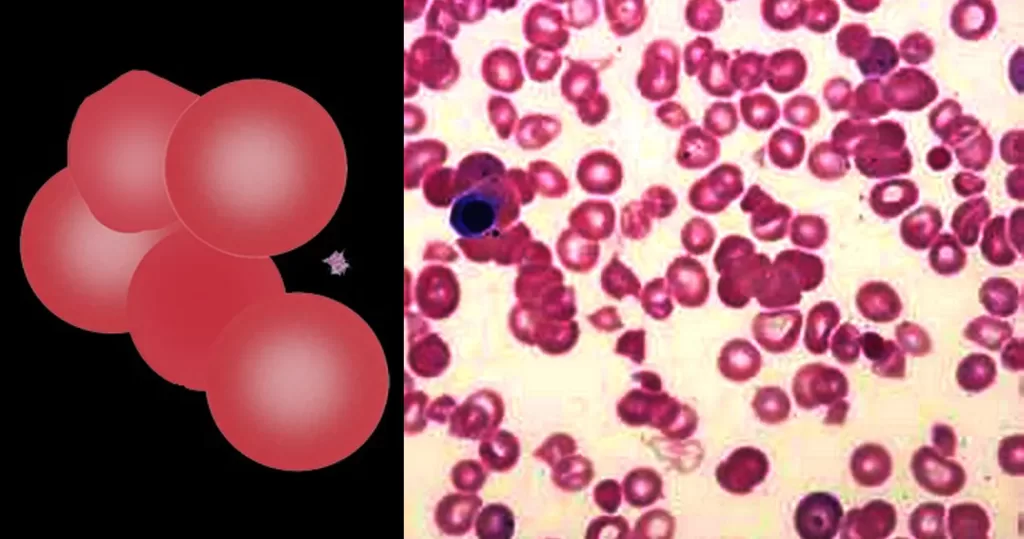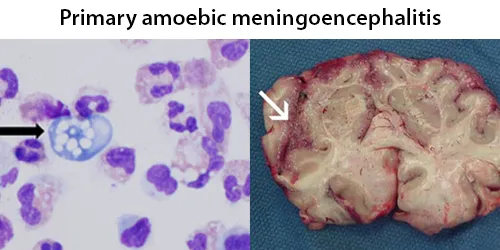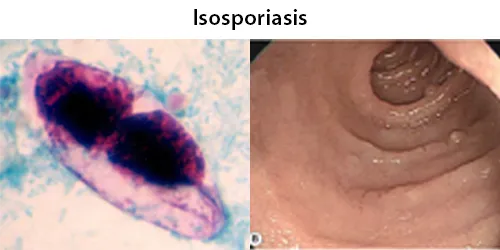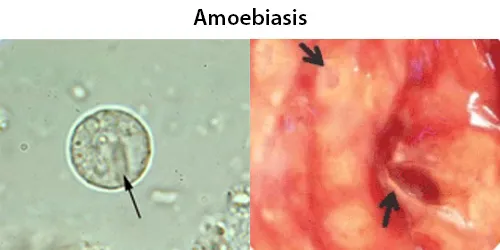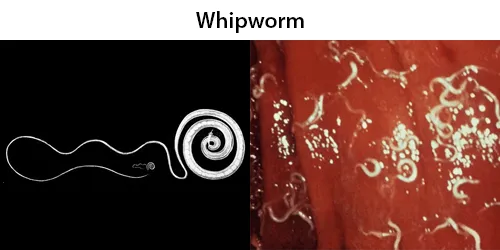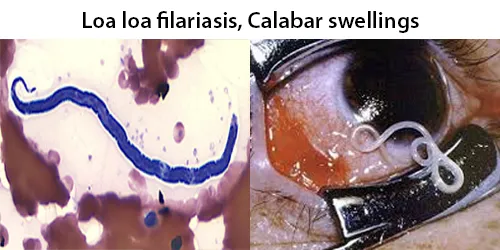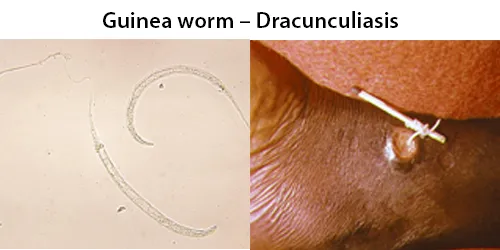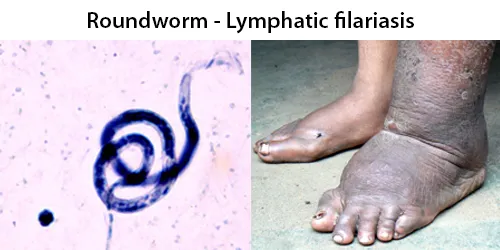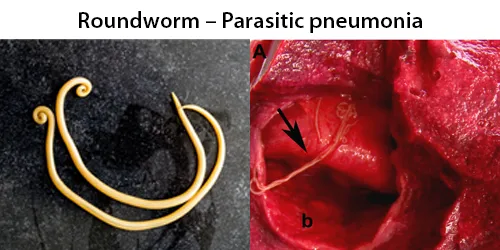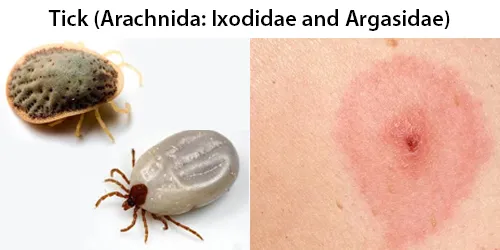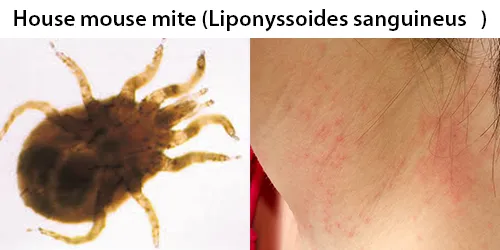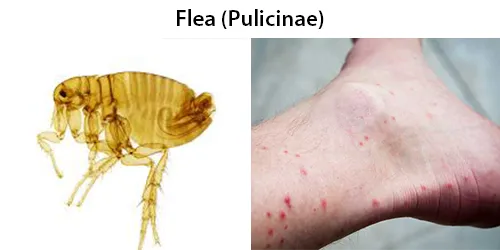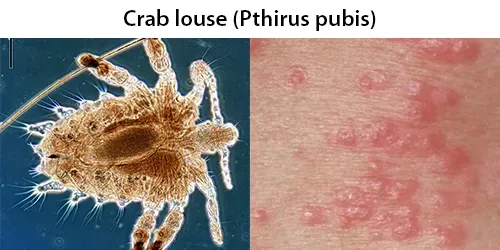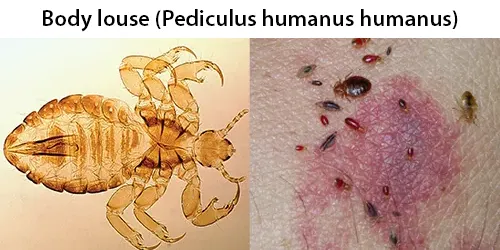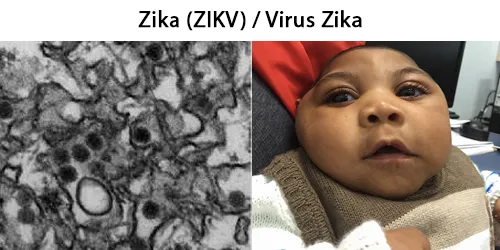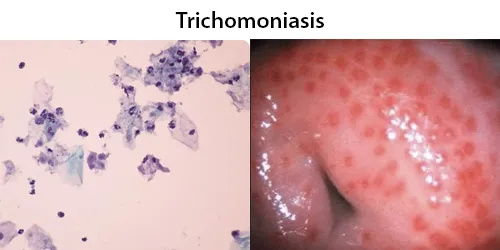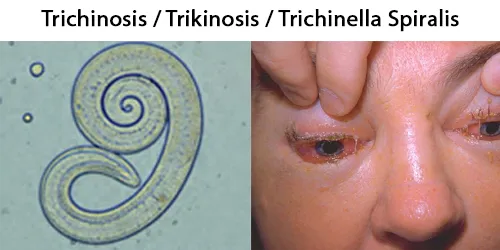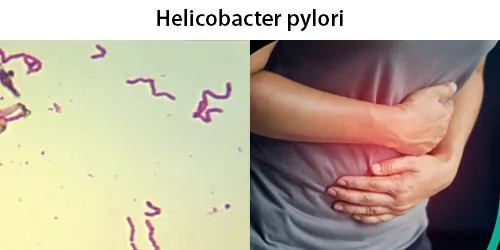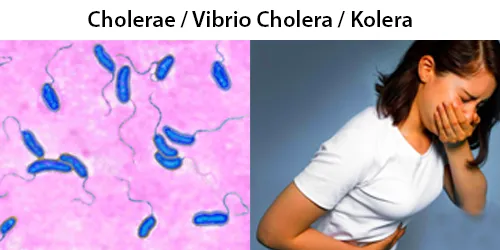Cancer A to Z, by Ignorance Isn’t Bliss
Out of all of my media projects, I’ve never been more infuriated than by this research thrust. You’d be hard-pressed to find someone that wouldn’t agree that the medical establishment isn’t really trying to cure cancer, and they’re all correct. The cure for cancer isn’t one single silver bullet if only we could find it (or they’d stop suppressing it). There are scores of cures for cancer, and many of them all well known and out in the open, yet non pursued by probably the majority of the medical doctors or industries out there. This presentation proves the beyond the shadow of a doubt. You’d think that the sorts of people in the business of saving lives, especially those who deal in cancer ‘treatments’, would have a hobby of reading the sorts of scholarly papers I dug through to compile this. From there you’d think that from what they learn via this hypothetical hobby they’d be constantly excited to tell their next cancer patient about the latest simple and often natural remedies they can also do themselves to have the best shot at surviving. But the fact is this isn’t how it works. In the wake of building this presentation I’ve never been more convinced the the overarching totality of the medical establishment are a massive group of psychopaths. When they know about proven effective and safe treatments, or are shown them by their patients, and they consciously dismiss and shrug them off, how can these people not be deranged sociopaths when their patients face horrifying death? If you’ve ever witnessed the process of death via brain cancer for instance, you’d catch my drift. I had an aunt die this way and it’s amongst the most disturbing ways you could ever contemplate your last days on earth. Now my mom has lung cancer and they’ve pissed of the wrong person. May their monopoly on suffering go crashing into the abyss. Considering that about 550,000 people die annually from cancer, I apologize to those for whom it’s already too late, but I present to you my most important presentation to date…DISCLAIMER: I’m not suggesting people don’t follow their doctors orders. I explain this better at the end of the presentation. There isn’t likely any sure silver bullet to curing existing cancer, while in the right combination in your diet you shouldn’t ever have to worry about getting it.
Acai Berries
Source: Fruits from the Aa Palm.
en.wikipedia.org…
www.youtube.com…
Brazilian berry destroys cancer cells in lab, UF study shows
news.ufl.edu…
Published today in the Journal of Agricultural and Food Chemistry, the study showed extracts from acai (ah-SAH-ee) berries triggered a self-destruct response in up to 86 percent of leukemia cells tested, said Stephen Talcott, an assistant professor with UFs Institute of Food and Agricultural Sciences. Acai berries are already considered one of the richest fruit sources of antioxidants, Talcott said. This study was an important step toward learning what people may gain from using beverages, dietary supplements or other products made with the berries.
Acrylamide (BAD)
www.cancer.gov…
*Acrylamide is a chemical used primarily for industrial purposes.
*Acrylamide has been found in certain foods, with especially high levels in potato chips, French fries, and other food products produced by high-temperature cooking.
*Food and cigarette smoke are the major sources of exposure to acrylamide.
*Acrylamide is considered to be a mutagen and a probable human carcinogen, based mainly on studies in laboratory animals.
*Scientists do not yet know with any certainty whether the levels of acrylamide typically found in some foods pose a health risk for humans.
How does cooking produce acrylamide? Asparagine is an amino acid (a building block of proteins) that is found in many vegetables, with higher concentrations in some varieties of potatoes. When heated to high temperatures in the presence of certain sugars, asparagine can form acrylamide. High-temperature cooking methods, such as frying, baking, or broiling, have been found to produce acrylamide (3), while boiling and microwaving appear less likely to do so. Longer cooking times can also increase acrylamide production when the cooking temperature is above 120 degrees Celsius (4, 5).
Aloe-emodin
Sources: Aloe Vera Plant, Aloe Vera Juice (inexpensive at Hispanic Markets).
Aloe-Emodin Induces Apoptosis in T24 Human Bladder Cancer Cells
www.ncbi.nlm.nih.gov…
AE inhibited cell viability, and induced G2/M arrest and apoptosis in T24 cells. AE increased the levels of Wee1 and cdc25c, and may have led to inhibition of the levels of cyclin-dependent kinase 1 and cyclin B1, which cause G2/M arrest. AE induced p53 expression and was accompanied by the induction of p21 and caspase-3 activation, which was associated with apoptosis. In addition, AE was associated with a marked increase in Fas/APO1 receptor and Bax expression but it inhibited Bcl-2 expression.
Protein kinase C involvement in aloe-emodin- and emodin-induced apoptosis in lung carcinoma cell
www.ncbi.nlm.nih.gov…
This study demonstrated aloe-emodin- and emodin-induced apoptosis in lung carcinoma cell lines CH27 (human lung squamous carcinoma cell) and H460 (human lung non-small cell carcinoma cell). Aloe-emodin- and emodin-induced apoptosis was characterized by nuclear morphological changes and DNA fragmentation.
The antiproliferative activity of aloe-emodin is through p53-dependent and p21-dependent apoptotic pathway in human hepatoma cell lines
www.ncbi.nlm.nih.gov…
The aim of this study is to investigate the anticancer effect of aloe-emodin in two human liver cancer cell lines, Hep G2 and Hep 3B. We observed that aloe-emodin inhibited cell proliferation and induced apoptosis in both examined cell lines, but with different the antiproliferative mechanisms.
Aloe-emodin Is a New Type of Anticancer Agent with Selective Activity against Neuroectodermal Tumors
cancerres.aacrjournals.org…
Here we report that aloe-emodin (AE), a hydroxyanthraquinone present in Aloe vera leaves, has a specific in vitro and in vivo antineuroectodermal tumor activity. The growth of human neuroectodermal tumors is inhibited in mice with severe combined immunodeficiency without any appreciable toxic effects on the animals. The compound does not inhibit the proliferation of normal fibroblasts nor that of hemopoietic progenitor cells. The cytotoxicity mechanism consists of the induction of apoptosis, whereas the selectivity against neuroectodermal tumor cells is founded on a specific energy-dependent pathway of drug incorporation. Taking into account its unique cytotoxicity profile
and mode of action, AE might represent a conceptually new lead antitumor drug.
Aloe-emodin induced in vitro G2/M arrest of cell cycle in human promyelocytic leukemia HL-60 cells
www.ncbi.nlm.nih.gov…
Aloe-emodin inhibited cell proliferation and induced G2/M arrest and apoptosis in HL-60 cells. Investigation of the levels of cyclins B1, E and A by immunoblot analysis showed that cyclin E level was unaffected, whereas cyclin B1 and A levels increased with aloe-emodin in HL-60 cells. Investigation of the levels of cyclin-dependent kinases, Cdk1 and 2, showed increased levels of Cdk1 but the levels of Cdk2 were not effected with aloe-emodin in HL-60 cells. The levels of p27 were increased after HL-60 cells
were cotreated with various concentrations of aloe-emodin.
Aloe-emodin-induced apoptosis in human gastric carcinoma cells
www.ncbi.nlm.nih.gov…
The purpose of this study was to investigate the anticancer effect of aloe-emodin, an anthraquinone compound present in the leaves of Aloe vera, on two distinct human gastric carcinoma cell lines, AGS and NCI-N87. We demonstrate that aloe-emodin induced cell death in a dose- and time-dependent manner. Noteworthy is that the AGS cells were generally more sensitive than the NCI-N87 cells. Aloe-emodin caused the release of apoptosis-inducing factor and cytochrome c from mitochondria, followed by the activation of caspase-3, leading to nuclear shrinkage and apoptosis.
Pomegranate Juice, Total Pomegranate Ellagitannins, and Punicalagin Suppress Inflammatory Cell Signaling in Colon Cancer Cells
pubs.acs.org…
In previous studies, pomegranate juice (PJ) and its ellagitannins inhibited proliferation and induced apoptosis in HT-29 colon cancer cells. The present study examined the effects of PJ on inflammatory cell signaling proteins in the HT-29 human colon cancer cell line. At a concentration of 50 mg/L PJ significantly suppressed TNFα-induced
COX-2 protein expression by 79% (SE = 0.042), total pomegranate tannin extract (TPT) 55% (SE = 0.049), and punicalagin 48% (SE = 0.022). Additionally, PJ reduced phosphorylation of the p65 subunit and binding to the NFκB response element 6.4-fold. TPT suppressed NFκB binding 10-fold, punicalagin 3.6-fold, whereas ellagic acid (EA) (another pomegranate polyphenol) was ineffective. PJ also abolished TNFα-induced AKT activation, needed for NFκB activity. Therefore, the polyphenolic phytochemicals in the pomegranate can play an important role in the modulation of inflammatory cell signaling in colon cancer cells.
Pomegranate fruit juice for chemoprevention and chemotherapy of prostate cancer
www.pnas.org…
We recently showed that pomegranate fruit extract (PFE) possesses remarkable antitumor-promoting effects in mouse skin. In this study, employing human prostate cancer cells, we evaluated the antiproliferative and proapoptotic properties of PFE. …Oral administration of PFE (0.1% and 0.2%, wt/vol) to athymic nude mice implanted with androgen-sensitive CWR22Rν1 cells resulted in a significant inhibition in tumor growth concomitant with a significant decrease in serum prostate-specific antigen levels. We suggest that pomegranate juice may have cancer-chemopreventive as well as cancer-chemotherapeutic effects against prostate cancer in humans.
Quercetin
Foods: Black & Green Tea, Onions, Caper, Lovage, Apples, Red Grapes, Citrus, Tomato, Broccoli, Cherry, Raspberry, Cranberry, Bilberry and many others.
Quercetin is a flavonol, plant-derived flavonoid, used as a nutritional supplement. Laboratory studies show it may have anti-inflammatory and antioxidant properties,and it is being
investigated for a wide range of potential health benefits.
Induction of cell cycle arrest and apoptosis in human breast cancer cells by quercetin
www.ncbi.nlm.nih.gov…
The present data, therefore, demonstrate that a flavonoid quercetin induces growth inhibition in the human breast carcinoma cell line MCF-7 through at least two different mechanisms; by inhibiting cell cycle progression through transient M phase accumulation and subsequent G2 arrest, and by inducing apoptosis.
The role of activated MEK-ERK pathway in quercetin-induced growth inhibition and apoptosis in A549 lung cancer cells
carcin.oxfordjournals.org…
Inhibition of caspase activation completely blocked quercetin-induced apoptosis. Expression of constitutively activated MEK1 in A549 cells led to activation of caspase-3 and apoptosis. The results suggest that in addition to inactivation of Akt-1 and alteration in the expression of the Bcl-2 family of proteins, activation of MEK-ERK is required for quercetin-induced apoptosis in A549 lung carcinoma cells.
Ellagic acid and quercetin interact synergistically with resveratrol in the induction of apoptosis and cause transient cell cycle arrest in human leukemia cells
www.cancerletters.info…(04)00430-6/abstract
Results showed a more than additive interaction for the combination of ellagic acid with resveratrol and furthermore, significant alterations in cell cycle kinetics induced by single compounds and combinations were observed. An isobolographic analysis was performed to assess the apparent synergistic interaction for the combinations of ellagic acid with resveratrol and quercetin with resveratrol in the induction of caspase 3 activity, confirming a synergistic interaction with a combination index of 0.64 for the
combination of ellagic acid and resveratrol and 0.68 for quercetin and resveratrol. Results indicate that the anticarcinogenic potential of foods containing polyphenols may not be based on the effects of individual compounds, but may involve a synergistic enhancement of the anticancer effects.
Quercetin decreases the expression of ErbB2 and ErbB3 proteins in HT-29 human colon cancer cells
www.journals.elsevierhealth.com…
Quercetin inhibited HT-29 cell growth in a dose-dependent manner, whereas rutin had no effect on the cell growth. DNA that was isolated from cells treated with 50 μmol/L of quercetin exhibited an oliogonucleosomal laddering pattern characteristic of apoptotic cell death. Western blot analysis of cell lysates revealed that Bcl-2 levels decreased dose-dependently in cells treated with quercetin, but Bax remained unchanged.
Food-derived polyphenols inhibit pancreatic cancer growth through mitochondrial cytochrome C release and apoptosis
onlinelibrary.wiley.com…
We measured effects of quercetin on pancreatic cancer in a nude mouse model. We also investigated the effects of quercetin, rutin, trans-resveratrol and genistein on apoptosis and underlying signaling in pancreatic carcinoma cells in vitro. …The inhibition of mitochondrial permeability transition prevented cytochrome c release, caspase-3 activation and apoptosis caused by polyphenols. Nuclear factor-κB activity was inhibited by quercetin and trans-resveratrol, but not genistein, indicating that this transcription factor is not the only mediator of the polyphenols’ effects on apoptosis. The results suggest that food-derived polyphenols inhibit pancreatic cancer growth and prevent metastasis
by inducing mitochondrial dysfunction, resulting in cytochrome c release, caspase activation and apoptosis.
Raspberries
en.wikipedia.org…
Black Raspberries Show Multiple Defenses In Thwarting Cancer (2001)
researchnews.osu.edu…
He chose black raspberries for this study because previous studies had shown that ellagic acid inhibited carcinogen-induced esophageal and colon cancer in animals. He and his colleagues then tested a series of fruits for their ellagic acid content, finding that berries contained the highest amount. “We then decided to take a food-based approach to cancer prevention and began testing the berries’ ability to inhibit chemically-induced esophageal and colon cancer,” Stoner said. “Sure enough, we found that freeze-dried berries were highly protective in the esophagus and colon. But we also found that they were ineffective in protecting against lung cancer. “The protective compounds in berries may not be absorbed into the blood stream and delivered to the lungs in high enough amounts to be protective. We do believe that they protect the esophagus and colon because they are absorbed by these organs as the food moves through the digestive tract.”
Black Raspberries Slow Cancer By Altering Hundreds Of Genes (2008)
www.sciencedaily.com…
The carcinogen affected the activity of some 2,200 genes in the animals esophagus in only one week, but 460 of those genes were restored to normal activity in animals that consumed freeze-dried black raspberry powder as part of their diet during the exposure. These findings, published in recent issue of the journal Cancer Research, also helped identify 53 genes that may play a fundamental role in early cancer development and may therefore be important targets for chemoprevention agents.
Resveratrol
Found in red grapes and blueberries.
en.wikipedia.org…
www.youtube.com…
Apoptosis Induced by Capsaicin and Resveratrol in Colon Carcinoma Cells Requires Nitric Oxide Production and Caspase
Activation
ar.iiarjournals.org…
We examined the role of nitric oxide (NO) and influence of p53 status during apoptosis induced by these agents in two isogenic HCT116 human colon carcinomas, wild-type p53 (p53-WT) and complete knockout of p53 (p53-null) cells. Capsaicin and resveratrol, alone or in combination, inhibited cell growth and promoted apoptosis by the elevation of NO; combined treatment in p53-WT cells was most effective. Increased NO production after treatment uniformly stimulated p53 and Bax expression through Mdm2 down-regulation in p53-WT cells, whereas all were unaffected in p53-null cells. Both cell types underwent a reduction in the levels of anti-apoptotic Bcl-2 protein, cytochrome c loss from mitochondria and activation of caspase 9 together with caspase 3, independently of p53 status.
Resveratrol Induces Apoptosis in Thyroid Cancer Cell Lines via a MAPK- and p53-Dependent Mechanism
jcem.endojournals.org…
Studies of nucleosome levels estimated by ELISA and of DNA fragmentation showed that RV induced apoptosis in both papillary and follicular thyroid cancer cell lines; these effects were inhibited by pifithrin-{alpha} and by p53 antisense oligonucleotide transfection.
Resveratrol induces growth inhibition and apoptosis in metastatic breast cancer cells via de novo ceramide signaling
www.fasebj.org…
In this study we show that resveratrol has a potent antiproliferative and proapoptotic effect on MDA-MB-231, a highly invasive and metastatic cell line from human breast cancer known to be resistant to several anticancer drugs.
Resveratrol induces cell death in colon cancer cells by a novel pathway involving lysosomal cathepsin D
carcin.oxfordjournals.org…
In human colorectal cancer cells, the polyphenol resveratrol (RV) activated the caspase-dependent intrinsic pathway of apoptosis. This effect was not mediated via estrogen receptors. Pepstatin A, an inhibitor of lysosomal cathepsin D (CD), not (2S,3S)-trans-epoxysuccinyl-L-leucylamido-3-methylbutane ethyl ester, an inhibitor of cathepsins B and L, prevented RV cytotoxicity. Similar protection was attained by small interference RNA-mediated knockdown of CD protein expression.
Resveratrol induces apoptosis in human esophageal carcinoma cells
carcin.oxfordjournals.org…
Resveratrol inhibited the growth of esophageal cancer cell line EC-9706 in a dose-and time-dependent manner. Resveratrol induced EC-9706 cells to undergo apoptosis with typically apoptotic characteristics, including morphological changes of chromatin condensation, chromatin crescent formation, nucleus fragmentation and apoptotic body formation.
Resveratrol-induced cell death in leukaemia cells
chesterrep.openrepository.com…
Resveratrol, a natural phytoalexin found in grapes and red wine, displays anti-cancer activities through a variety of mechanisms that include the induction of cancer cell apoptosis. Although high concentrations may be needed for the efficacy of resveratrol alone, the compound shows promise as a potent sensitizer of the apoptotic effect of other anti-cancer agents, including death ligand TRAIL. Intracellular heat shock proteins (Hsps) are frequently up-regulated in cancer cells, conferring resistance to apoptosis. Modulation of these proteins may overcome the resistance and increase efficacy of anticancer therapies. In this study, resveratrol caused significant dose-dependent apoptosis or necrosis in the lymphoid and myeloid leukaemia cell lines Jurkat and U937 at 50M and above.
Resveratrol interferes with AKT activity and triggers apoptosis in human uterine cancer cells
www.ncbi.nlm.nih.gov…
High-dose of resveratrol triggered apoptosis in five out of six uterine cancer cell lines, as judged from Hoechst nuclear staining and effector caspase cleavage. In accordance, uterine cancer cell proliferation was decreased. Resveratrol also reduced cellular levels of the phosphorylated/active form of anti-apoptotic kinase AKT.
Retinoic Acid & Retinamide
en.wikipedia.org…
Retinoic acid is the oxidized form of Vitamin A, with only partial vitamin A function. Retinamide is a synthetic retinoid useful when retinoic acid treatment is unresponsive.
Retinoic acid receptor beta mediates the growth-inhibitory effect of retinoic acid by promoting apoptosis in human breast cancer cells
mcb.asm.org…
Retinoids are known to inhibit the growth of hormone-dependent but not that of hormone-independent breast cancer cells. We investigated the involvement of retinoic acid (RA) receptors (RARs) in the differential growth-inhibitory effects of retinoids and the underlying mechanism. Our data demonstrate that induction of RAR beta by RA correlates with the growth-inhibitory effect of retinoids. The hormone-independent cells acquired RA sensitivity when the RAR beta expression vector was introduced and expressed in the cells.
N-(4-hydroxyphenyl)retinamide induces apoptosis of malignant hemopoietic cell lines including those unresponsive to retinoic acid
www.ncbi.nlm.nih.gov…
In conclusion, our study demonstrates that HPR suppresses malignant cell growth and induces apoptosis at pharmacologically relevant doses. The differential responsiveness by a number of cell lines, especially HL-60R and NB306, to HPR and RA indicates that these compounds may act through different receptors. The clinical use of HPR, particularly in retinoic acid-unresponsive acute promyelocytic leukemia patients, is suggested.
Differential induction of apoptosis by all-trans-retinoic acid and N-(4-hydroxyphenyl)retinamide in human head and neck squamous cell carcinoma cell lines
clincancerres.aacrjournals.org…
Retinoids have been shown to act as cytostatic agents against a variety of tumor cell types, including squamous carcinoma cells. Recently it was reported that certain retinoids can induce apoptosis as well. Because we are investigating the potential of retinoids in chemoprevention and therapy for head and neck premalignant and malignant lesions, we compared the effects of all-trans-retinoic acid (ATRA) and N-(4-hydroxyphenyl)retinamide (4HPR) on seven human head and neck squamous cell carcinoma cell lines (17A, 17B, 22A, 22B, 38, SqCC/Y1, and 1483). Six of the seven cell lines showed dramatic morphological changes after treatment with 10 micrometer 4HPR, whereas no such changes were induced by 10 micrometer ATRA. …These results demonstrate that 4HPR causes apoptosis in several head and neck squamous cell carcinoma cell lines and that it is more
potent in this effect than ATRA.
Rhein
Food: Rhubarb
en.wikipedia.org…
Rhein-induced apoptosis in A-549 Human Lung Cancer cells
ar.iiarjournals.org…
The Ca2+ chelator BAPTA was added to the cells before rhein treatment, thus blocking the Ca2+ production and inhibiting rhein-induced apoptosis in A-549 cells. Our data demonstrate that rhein induces apoptosis in A-549 cells via a Ca2+-dependent mitochondrial pathway.
Rhein lysinate suppresses the growth of tumor cells and increases the anti-tumor activity of Taxol in mice
www.ncbi.nlm.nih.gov…
In previous studies, rhein, one of the major bioactive constituents in the rhizome of rhubarb, inhibited the proliferation of various human cancer cells. However, because of its water insolubility, the anti-tumor efficacy of rhein was limited in vivo. In this study, we observed the anti-tumor activity of rhein lysinate (the salt of rhein and lysine easily dissolves in water) in vivo and investigated its mechanism. …It inhibited tumor growth by both intragastric and intraperitoneal administrations and improved the
therapeutic effect of Taxol in H22 hepatocellular carcinoma mice. In conclusion, rhein lysinate offers an anti-tumor activity in vivo and is hopeful to be a chemotherapeutic drug.
Rhein induces apoptosis in HL-60 cells
www.ncbi.nlm.nih.gov…
Rhein is an anthraquinone compound enriched in the rhizome of rhubarb, a traditional Chinese medicine herb showing anti-tumor promotion function. In this study, we first reported that rhein could induce apoptosis in human promyelocytic leukemia cells (HL-60), characterized by caspase activation, poly(ADP)ribose polymerase (PARP) cleavage, and DNA fragmentation. …Our data demonstrate that rhein induces apoptosis in HL-60 cells via a ROS-independent mitochondrial death pathway.
Rhein Inhibits the Growth and Induces the Apoptosis of Hep G2 Cells
www.ncbi.nlm.nih.gov…
The effects of rhein on the human hepatoblastoma G2 (Hep G2) cell line were investigated in this study. The results showed that rhein not only inhibited Hep G2 cell growth but also induced apoptosis and blocked cell cycle progression in the G1 phase.
Rhein Induced Apoptosis…in SCC-4 Human Tongue Squamous Cancer Cells
iv.iiarjournals.org…
In this study, it was observed that rhein induced S-phase arrest through the inhibition of p53, cyclin A and E and it induced apoptosis through the endoplasmic reticulum stress by the production of reactive oxygen species (ROS) and Ca2+ release, mitochondrial dysfunction, and caspase-8, -9 and -3 activation in human tongue cancer cell line (SCC-4).
Rosemary
en.wikipedia.org…
Rosemary may cut cancer-causing agents (in meats)
www.upi.com…
The addition of rosemary extract to ground beef reduces cancer-causing agents that can form upon cooking, U.S. researchers said. Heterocyclic amines are mutagenic compounds that form when meat and fish are cooked at high temperatures — especially meats that are grilled, pan-fried, broiled or barbecued — and are categorized as human carcinogens, the researchers said.
Selenium
Foods: Brazil Nuts, Other Nuts, Fish, Wheat Flour, Shell Fish, Chicken, Turkey and many others.
en.wikipedia.org…
Effects of selenium supplementation for cancer prevention in patients with carcinoma of the skin
www.ncbi.nlm.nih.gov…
Selenium treatment did not protect against development of basal or squamous cell carcinomas of the skin. However, results from secondary end-point analyses support the hypothesis that supplemental selenium may reduce the incidence of, and mortality from, carcinomas of several sites. These effects of selenium require confirmation in an independent trial of appropriate design before new public health recommendations regarding selenium supplementation can be made.
Redox-mediated Effects of Selenium on Apoptosis and Cell Cycle in the LNCaP Human Prostate Cancer
cancerres.aacrjournals.org…
The effects of selenium exposure were studied in LNCaP human prostate cancer cells, and this same cell line adapted to selenium over 6 months to compare acute versus chronic effects of sodium selenite, the latter most closely resembling human clinical trials on the effects of selenium in cancer prevention and therapy. Our results demonstrated that oxidative stress was induced by sodium selenite at high concentrations in both acute and chronic treatments, but outcomes were different. …Our results in selenite-adapted cells suggest that selenium may exert its effects in human prostate cancer cells by altering intracellular redox state, which subsequently results in cell cycle block.
Selenium-induced inhibition of angiogenesis in mammary cancer at chemopreventive levels of intake
www.ncbi.nlm.nih.gov…
The trace element nutrient selenium (Se) has been shown to possess cancer-preventive activity in both animal models and humans, but the mechanisms by which this occurs remain to be elucidated. Because angiogenesis is obligatory for the genesis and growth of solid cancers, we investigated, in the study presented here, the hypothesis that Se may exert its cancer-preventive activity, at least in part, by inhibiting cancer-associated angiogenesis. The effects of chemopreventive levels of Se on the intra-tumoral microvessel density and the expression of vascular endothelial growth factor in 1-methyl-1-nitrosourea-induced rat mammary carcinomas and on the proliferation and survival and matrix metalloproteinase activity of human umbilical vein endothelial cells in vitro were examined.
Skullcap
Source: Chinese herb Scutellaria Baicalensis.
en.wikipedia.org…
This herb has mutliple compounds that have had results together and apart. Make sure it’s the exact species.
Wogonin and fisetin induce apoptosis in human promyeloleukemic cells
www.ncbi.nlm.nih.gov…
Seven structurally related flavonoids including luteolin, nobiletin, wogonin, baicalein, apigenin, myricetin and fisetin were used to study their biological activities on the human leukemia cell line, HL-60. On MTT assay, wogonin, baicalein, apigenin, myricetin and fisetin showed obvious cytotoxic effects on HL-60 cells, with wogonin and fisetin being the most-potent apoptotic inducers among them.
Antitumor effects of Scutellariae radix and its components baicalein, baicalin, and wogonin on bladder cancer cell lines
www.goldjournal.net…(00)00467-2/abstract
All the drugs inhibited cell proliferation in a dose-dependent manner, but baicalin exhibited the greatest antiproliferative activity. The concentration of baicalin necessary to obtain 50% inhibition was 3.4 μg/mL for KU-1, 4.4 μg/mL for EJ-1, and 0.93 μg/mL for MBT-2. For KU-1 and MBT-2, the percentage of cell survival significantly decreased (P <0.05) at a baicalin concentration of 1 μg/mL. In an in vivo experiment, antitumor effects of Scutellariae radix on C3H/HeN mice implanted with MBT-2 were investigated. All the control mice showed a progressive increase in tumor volume, reaching 2.81 – 0.18 cm3 on day 20 and 5.36 – 0.44 cm3 on day 25. However, when Scutellariae radix was orally administered at a dose of 10 mg per mouse one time daily for 10 days from day 11 to day 20, the tumor volume was 1.99- 0.19 cm3 on day 20 and 3.86 – 0.26 cm3 on day 25, a significant inhibition of tumor growth (P <0.05).
Induction of apoptosis in prostate cancer cell lines by a flavonoid, baicalin
www.cancerletters.info…(00)00591-7/abstract
The flavonoid baicalin (baicalein 7-D-β-glucuronate), isolated from the dried root of Scutellaria baicalensis Georgi (Huang Qin), is widely used in the traditional Chinese herbal medicine for its anti-inflammatory, anti-pyretic and anti-hypersensitivity effects. In the present study, we investigated the in vitro effects of baicalin on the growth, viability, and
induction of apoptosis in several human prostate cancer cell lines, including DU145, PC-3, LNCaP and CA-HPV-10. The cell viability after treating with baicalin for 2)4 days was quantified by a colorimetric 3-(4,5-dimethylthiazol-2-yl)-5-(3-carboxymethoxyphenyl)-2-(4-sulfophenyl)-2H-tetrazolium (MTS) assay. The results showed that baicalin could inhibit the proliferation of prostate cancer cells.
Effects of wogonin on inducing apoptosis of human ovarian cancer A2780 cells
www.ncbi.nlm.nih.gov…
Wogonin can inhibit proliferation and induce apoptosis of A2780 cells within a certain concentration range(50-250 microg/ml). Anticancer effects of wogonin were associated with the induction of apoptosis and partly with the suppression of telomerase activity.
Reversal of inflammation-associated dihydrodiol dehydrogenases (AKR1C1 and AKR1C2) overexpression and drug resistance in nonsmall cell lung cancer cells by wogonin and chrysin
onlinelibrary.wiley.com…
We also showed that IL-6-induced AKR1C1/1C2 expression and drug resistance were inhibited by wogonin and chrysin, which are major flavonoids in Scutellaria baicalensis, a widely used traditional Chinese and Japanese medicine. In conclusion, this study demonstrated novel links of pro-inflammatory signals, AKR1C1/1C2 expression and drug resistance in NSCLC.
Anticancer effects of wogonin in both estrogen receptor-positive and -negative human breast cancer cell lines in vitro and in nude mice xenografts
onlinelibrary.wiley.com…
Wogonin feeding to mice showed inhibition of tumor growth of T47D and MDA-MB-231 xenografts by up to 88% without any toxicity after 4 weeks of treatment. As wogonin was effective both in vitro and in vivo, our novel findings open the possibility of wogonin as an effective therapeutic and/or chemopreventive agent against both ER-positive and -negative breast cancers, particularly against the more aggressive and hormonal therapy-resistant ER-negative types.
Sophora
Source: Genus of shrubs native to every continent except Africa & North America.
en.wikipedia.org…
Ethanolic extracts of Sophora moorcroftiana seeds induce apoptosis of human stomach cancer cell line SGC-7901 in vitro
academicjournals.org…
The seeds of Sophora moorcroftiana are used in Chinese traditional medicine for the treatment of verminosis, infectious diseases, and anti-inflammation. To investigate the antitumor and induction of apoptosis activity of Sophora moorcroftiana seeds, the ethanolic extracts from the seeds was prepared and added into the culture of human stomach cancer cell line SGC-7901 in vitro. The proliferation and apoptosis of cells treated with the ethanolic extracts were assessed by tetrazolium salt reduction (MTT) assay, fluorescence microscopy, transmission electron microscopy, flow cytometry and agarose gel electrophoresis of DNA fragmentation. The results showed that the growth of SGC-7901 cells was strongly inhibited by the ethanolic extracts at the concentration ranging between 0.31-5.00 mg/ml, and the apoptosis of treated cells was induced at the concentration of 1.25, 2.50, and 5.00 mg/ml in vitro. This suggested that the ethanolic extracts from S. moorcroftiana seeds contain potent antitumor fraction(s) on human stomach cancer SGC-7901 cells.
A mannose-binding lectin from Sophora flavescens induces apoptosis in HeLa cells
www.ncbi.nlm.nih.gov…
The objective of this study was to investigate the anti-tumoractivity of a lectin from Sophora flavescens and explore its potential apoptotic induction mechanism. …In conclusion, all
experimental results demonstrated that this lectin seems to be a potent anti-tumor agent for its cytotoxicity and apoptosis effects on HeLa cells. Also, bioinformatics analyses showed that this lectin is speculated to bind a certain mannose-containing receptor on cancer cell surface thereby initiating downstream caspase cascade.
Sophoranone, extracted from a traditional Chinese medicine Shan Dou Gen, induces apoptosis in human leukemia U937 cells
onlinelibrary.wiley.com…
Screening of various natural products in a search for novel inducers of apoptosis in human leukemia cells led us to identify the strong apoptosis-inducing activity in a fraction extracted with methanol from the roots of Sophora subprostrata Chun et T. Chen. We purified the compound that induced apoptosis in human leukemia cells and identified it as sophoranone. Sophoranone inhibited cell growth and induced apoptosis in various lines of cells from human solid tumors, with 50% inhibition of growth of human stomach cancer MKN7 cells at 1.2 – 0.3 μM. The growth-inhibitory and apoptosis-inducing activities of sophoranone for leukemia U937 cells were very much stronger than those of other flavonoids, such as daidzein, genistein and quercetin.
Matrine induced gastric cancer MKN45 cells apoptosis via increasing pro-apoptotic molecules of Bcl-2 family
www.ncbi.nlm.nih.gov…
Matrine, one of the main active components from the dry roots of Sophora flavescence, was known to induce apoptosis in a variety of tumor cells in vitro. However, the molecular mechanism of cell apoptosis induced by Matrine remains elusive. Here, we investigated the apoptosis in Matrine-treated human gastric cancer MKN45 cells.
The results showed that Matrine could inhibit cell proliferation and induce apoptosis in a dose-dependent manner. Further immunoblots revealed that in Matrine-treated cells, caspase-3, -7 were activated and the pro-apoptotic molecules Bok, Bak, Bax, Puma, and Bim were also up-regulated. Our results suggested that Matrine induced gastric cancer MKN45 cells apoptosis via increasing pro-apoptotic molecules of Bcl-2 family.
Leachianone A as a potential anti-cancer drug by induction of apoptosis in human hepatoma HepG2 cells
www.ncbi.nlm.nih.gov…
The Chinese herbal medicine Radix Sophorae is widely applied as an anti-carcinogenic/ anti-metastatic agent against liver cancer. In this study, Leachianone A, isolated from Radix Sophorae, possessed a profound cytotoxic activity against human hepatoma cell line HepG2 in vitro, with an IC(50) value of 3.4microg/ml post-48-h treatment. Its action mechanism via induction of apoptosis involved both extrinsic and intrinsic pathways. Its anti-tumor effect was further demonstrated in vivo by 17-54% reduction of tumor size in HepG2-bearing nude mice, in which no toxicity to the heart and liver tissues was observed. In conclusion, this is the first report describing the isolation of Leachianone A from Radix Sophorae and the molecular mechanism of its anti-proliferative effect on HepG2 cells.
Tumor-specificity and Apoptosis-inducing Activity of Stilbenes and Flavonoids
ar.iiarjournals.org…
A total of eleven stilbenes [1-6] and flavonoids [7-11] were investigated for their tumor-specific cytotoxicity and apoptosis-inducing activity, using four human tumor cell lines (squamous cell carcinoma HSC-2, HSC-3, submandibular gland carcinoma HSG and promyelocytic leukemia HL-60) and three normal human oral cells (gingival fibroblast HGF, pulp cell HPC, periodontal ligament fibroblast HPLF). All of the compounds, especially sophorastilbene A [1], (+)-α-viniferin [2], piceatannol [5], quercetin [9] and
isoliquiritigenin [10], showed higher cytotoxicity against the tumor cell lines than normal cells, yielding tumor-specific indices of 3.6, 4.7, >3.5, >3.3 and 4.0, respectively. Among the seven cell lines, HSC-2 and HL-60 cells were the most sensitive to the cytotoxic action of these compounds. Sophorastilbene A [1], piceatannol [5], quercetin [9] and isoliquiritigenin [10] induced internucleosomal DNA fragmentation and activation of caspases -3, -8 and -9 dose-dependently in HL-60 cells. (+)-α-Viniferin [2]
showed similar activity, but only at higher concentrations. All the compounds failed to induce DNA fragmentation and activated caspases to much lesser extents in HSC-2 cells. Western blot analysis showed that sophorastilbene A [1], piceatannol [5] and quercetin [9] did not induce any consistent changes in the expression of pro-apoptotic
proteins (Bax, Bad) and anti-apoptotic protein (Bcl-2) in HL-60 and HSC-2 cells. An undetectable expression of Bcl-2 protein in control and drug-treated HSC-2 cells may explain the relatively higher sensitivity of this cell line to stilbenes and flavonoids.
Soy: Good or Bad?
There’s conflicting data on the effects of Soy on “estrogen positive” cell lines. Before taking on a Soy regimen, you’ll need to know whether or not your cancer is estogen positive or negative, do more research, and consult your physician.
From there Soy has multiple compounds shown individually to fight cancer. It includes compounds such as Daidzein & Genistein, while Soy fermented with Bacillus Subtilis is the highest known natural source of Vitamin K2.
Spikemoss
Plant: Selaginella Tamariscina
en.wikipedia.org…
Selaginella tamariscina induces apoptosis via a caspase-3-mediated mechanism in human promyelocytic leukemia cells
www.ncbi.nlm.nih.gov…
ST-induced apoptosis is accompanied by the activation of caspase-3 and the specific proteolytic cleavage of PARP. Concomitantly, ST treatments led to an increase in the proapoptotic Bax levels, while Bcl-2 expression was decreased. Moreover, this effect was attenuated by SOD and catalase. These results suggest that oxidative stress may be involved in the cytotoxicity of ST, and that ST-induced apoptosis of HL-60 cells is primarily mediated bythe caspase activation pathway.
Effects of Selaginella tamariscina on in vitro tumor cell growth, p53 expression, G1 arrest and in vivo gastric cell proliferation
www.ncbi.nlm.nih.gov…
The 1% Selaginella tamariscina feeding caused a significant reduction (P < 0.05) in the proliferating cell nuclear antigen-(PCNA) labeling index of the glandular stomach epithelium as compared with the MNNG-alone group value although 5% Selaginella tamariscina feeding was only associated with a tendency for decrease. These results suggest that Selaginella tamariscina could be a candidate chemopreventive agent against gastric cancer.
Radioprotective effects of the water-soluble part of Selaginella Tamariscina on thymus and spleen in irradiated mice
en.cnki.com.cn…
Conclusion The water-soluble part of Selaginella tamariscina can protect mice from rays by inhibiting of apoptosis,adjusting of cell cycle progression of thymus and spleen cells in irradiated mice.
Stonebreaker
Herb: Phyllanthus Niruri (Chinese Medicinal Herb)
en.wikipedia.org…
Phyllanthus urinaria triggers the apoptosis and Bcl-2 down-regulation in Lewis lung carcinoma cells
www.ncbi.nlm.nih.gov…
Phyllanthus urinaria (P. urinaria), a widely used herb medicine, was tested for the anticancer effect in its water extract for the first time. The water extract of P. urinaria significantly decreased the number of Lewis lung carcinoma cells in a dose-and time-dependent manner as determined by MTT assay. However, the water extract of P. urinaria did not exert any cytotoxic effect on normal cells such as endothelial cells and liver cells. Result from flow cytometry revealed a dose-dependent increase of dead cells 24 hours
after treating Lewis lung carcinoma cells with P. urinaria extract.
In-vitro Inhibitory Effect of Phyllanthus Urinaria L Compound on Proliferation of Human liver Cancer Cell HePG_2 and Its Apoptosis Induction
en.cnki.com.cn…
Within a certain limit of concentrations,the higher the concentration and the longer the acting time,the stronger the inhibition.Co-cultured with 500 μ g/mL Phyllanthus Urinaria L compound for 72 h,the inhibitory rate reached 93.58 % and IC50 was 240 μ g/mL.Phyllanthus Urinaria L compound at different concentrations had an certain effect on inducing cell apoptosis.Conclusion Phyllanthus Urinaria L compound can inhibit the proliferation of hepatoma cell,and its mechanism may be related with the induction of hepatoma cell HePG2 apoptosis.
Phyllanthus Amarus Inhibits Cell Growth and Induces Apoptosis in Daltons Lymphoma Ascites Cells
ict.sagepub.com…
The authors found in an earlier study that Phyllanthus amarusextract could significantly inhibit the solid and ascites tumor development in mice induced by Dalton’s lymphoma ascites (DLA) cells. In the present study, the apoptotic effects of P.amarus against DLA cells in culture was evaluated. P.amarus produced significant reduction in cell viability as determined by the MTT assay.






















